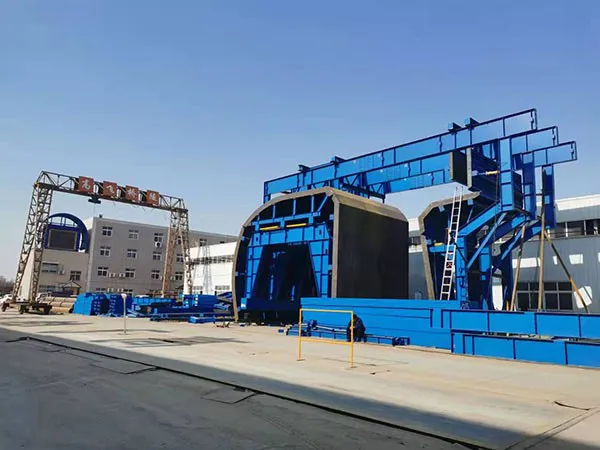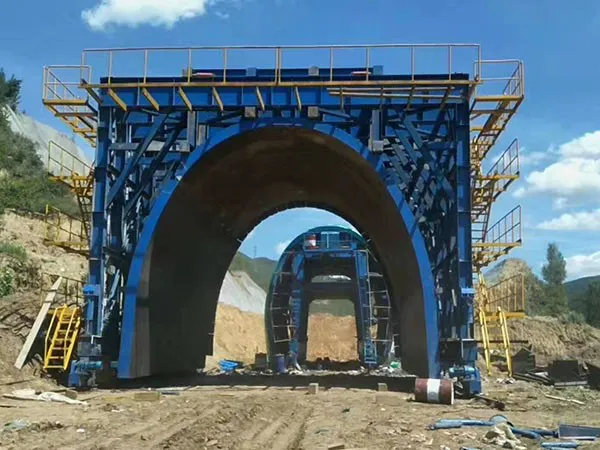In the grand blueprints of modern architecture, we often marvel at the towering skyscrapers and the majestic bridges. However, deep underground, there lies an equally crucial yet often overlooked engineering technology: tunnel lining. Like the "skin" and "skeleton" of a tunnel, it silently safeguards its safety and stability, and is an indispensable component of modern infrastructure construction.
So, what exactly is tunnel lining? Why is it so crucial in modern engineering?

Simply put, tunnel lining refers to one or more layers of structure applied to the interior of the tunnel wall after tunnel excavation. It is typically composed of reinforced concrete, shotcrete, steel arches, precast segments, or composite materials. Its primary functions are:
Supporting surrounding rock and preventing collapse: After tunnel excavation, the surrounding rock and soil lose their original support and become unstable. Lining provides counter-support, effectively suppressing deformation of the surrounding rock, preventing tunnel collapse, and ensuring the safety of construction workers and future users. Withstanding External Loads: The lining must withstand geotechnical pressure from the overlying strata, groundwater pressure, seismic loads, and even dynamic loads that may arise during operation. It must possess sufficient strength and rigidity to withstand these complex external forces.
Waterproofing and Anti-seepage: Groundwater presents a major challenge in tunnel construction. The lining forms a waterproof barrier, preventing groundwater from entering the tunnel, protecting the tunnel structure and internal equipment from water damage, while providing a dry and comfortable passage environment.
Providing a Smooth Surface: The lining provides a smooth, regular interior surface for the tunnel, facilitating the installation of ventilation, lighting, transportation, and other electromechanical equipment, enhancing the tunnel's functionality and aesthetics.
Extending Tunnel Life: Through effective support, waterproofing, and protection, the lining significantly extends the service life of the tunnel, reduces ongoing maintenance costs, and contributes to sustainable infrastructure development.
Amid the current boom in global infrastructure development, tunnel engineering is increasingly being used in a wide range of applications, from urban subways, highways, and railway tunnels to water conservancy projects and underground pipeline corridors. As projects scale and geological conditions become increasingly complex, the importance of tunnel lining becomes increasingly prominent:
1. Safety First: Protecting Life and Property
Safety is the primary consideration in any project. Without a reliable lining, a tunnel is like a hollow cavity poised to collapse at any moment. Lining is particularly important in areas with complex geological conditions, fractured surrounding rock, or significant groundwater infiltration, ensuring both construction and operational safety. It effectively prevents sudden disasters such as landslides and flooding, safeguarding the lives of construction workers and avoiding the significant economic losses caused by accidents.
2. Challenging Complex Geology: Conquering the Underground
Modern tunnel construction often traverses a variety of extreme geological environments, including weak soils, expansive rock, fault zones, and high water pressure zones. Advances in lining technology, particularly precast segmental lining, double-layer lining, and composite lining, have provided engineers with powerful tools to address these challenges. These technologies offer customized solutions tailored to varying geological conditions, enabling previously insurmountable underground obstacles to be overcome.

3. Improving Efficiency and Economy: Continuously Striving for Excellence in Engineering Practice
Although lining construction itself requires investment, high-quality lining can bring significant long-term economic benefits. It reduces the need for subsequent maintenance and reinforcement, lowering operating costs. Furthermore, advances in lining construction technology, such as automated lining trolleys and prefabricated assembly techniques, have greatly improved construction efficiency, shortened construction schedules, and thus reduced total project costs.
4. Environmental Protection and Sustainable Development: Practicing Green Engineering
Tunnel construction often impacts the surrounding environment. The waterproofing function of linings helps control groundwater flow, avoiding negative impacts on surface water systems and groundwater resources. Furthermore, optimizing lining design and material selection can reduce resource consumption and carbon emissions, contributing to the goal of green and sustainable engineering construction.
5. Meeting High-Performance Demands: Ensuring Future Traffic
As society's demands for infrastructure performance increase, tunnels must not only be accessible but also safe, comfortable, and efficient. As a crucial component of tunnel structures, the surface smoothness, durability, and waterproofness of tunnel linings directly impact the environmental quality and operational efficiency within the tunnel. For example, the precision of subway tunnel linings is directly related to the smoothness and safety of train operations.
Tunnel linings, seemingly hidden underground, are in reality the crown jewel of modern engineering technology. With their tenacity and wisdom, they support our dreams of crossing mountains and rivers, and across seas. They provide a solid and reliable foundation for urban underground transportation arteries, water conservancy lifelines, and even the future development of even greater underground spaces. Understanding the principles and importance of tunnel linings is not only a respect for engineering technology itself, but also a profound understanding of the cornerstone of future social development.
Gaofei
Address: 200m east of tulip garden, group 12 of zhangling community, hongshan street office, hongshan town, xigong district, Luoyang
Tel: +8616638856888
Contact: Gaofei Huang
Mobile: +86-18637923976
Phone: 0379-80881719/ 0379-60162687
QQ: 286827457
E-mail: gaofei@gf-bridge-tunnel.com